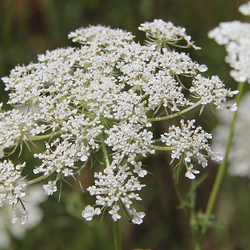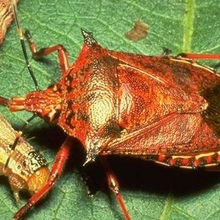Here in the mid-south summer wildflowers are blooming and among them lurks a deadly poison. Spotted hemlock, or poison hemlock is blooming now and it is best that people become familiar with this weed. Children love to pick wildflowers and this is a showy, large plant with lacy, frothy blooms that would definitely attract their attention. Most kids have been educated not to put strange plants in their mouths, however the toxins in this one are so potent that just the sap on their hands can make them very ill. Kids love to pick bouquets and with school turning out many will be wandering afield.
Conium maculatum is a European native and bears a resemblance to the harmless Queen Anne's Lace (Daucus carota or wild carrot) that is also blooming now. Both sport lacy, white blossoms made up of hundreds of smaller flowers. These are called umbels and the shape bears a resemblance to an umbrella (where the name of our favorite rain-shedding tool originated.) Check out the links above for even more images of these two plants.
It has a dark history connected with the famous philosopher Socrates, who was ordered to take the poison because his teachings were considered immoral and there was a detailed account of the effects of the toxin as it progressed through his body. Ultimately, it causes respiratory failure and it only takes a little to be fatal. Through history, there are cases of hemlock poisoning that are well-documented, even down to children perishing from making whistles from the hollow stems, so it is best to recognize this deadly plant when you see it and remove it promptly before it sets seed. It has a ferny, fluffy foliage similar to Queen Anne's Lace and its other cousins in the Apiaceae or parsley family and the flowering stalks arise in late spring from the biennial rosettes of the year before.
The images below will point out the differences so that identification is easy. This will allow adults to remove the toxic plants from their property to prevent the young, uneducated or livestock from stumbling on them. The hemlock generally grows in damp, waste areas and favors, road ditches and creeksides. Queen Anne's Lace prefers open meadows and sunny fields. The hemlock forms a bushy, shrubby plant with thick, red spotted, hollow stems. The stems can often reach a couple of inches in diameter and the plants often tower over 6 feet tall. Queen Anne's lace is identified by solitary, airy stems sporting a single blossom, or at the most two and rarely reach more that 3 feet tall. Once you learn the difference, it is no trouble to tell them apart.
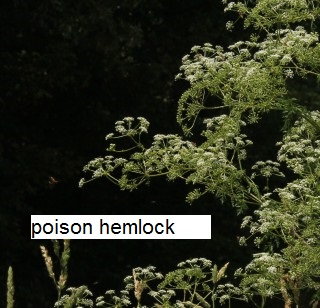

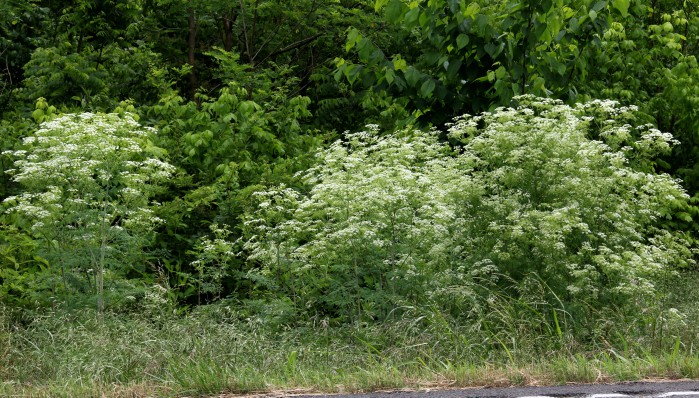
This plant is so toxic that precautions need to be taken when you remove it as well. It is best done in spring before it blooms. The plants in the image above are along a stretch of local highway known as Sinkhole Hill (yes, that is an actual place that my nearby readers know) Wear a mask, gloves and goggles to prevent accidental contact with the sap and cut the plants to the ground. Dispose of them in garbage bags and never compost it. It may take several years to clear out a thick infestation since the millions of seeds stay viable for a number of years. You can also use a chemical herbicide, however that does not remove the poison from the dead plants, so it is best to cut and bag. Clean your shears thoroughly before removing protective gear and wash your clothes.
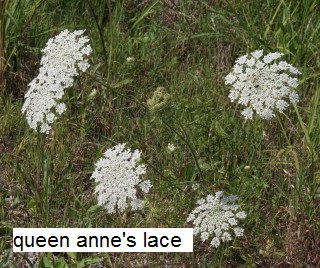
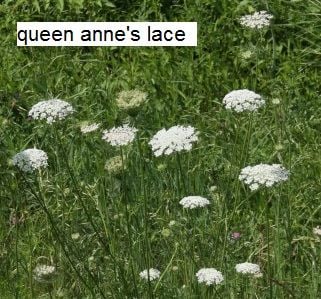
Most plants encountered in the wild are relatively harmless, or at worst cause minor discomforts but this is one that is widespread throughout the world that should be treated with respect and caution. Knowledge is power, so learn what dangers lurk in your neighborhood and educate your children as well.



